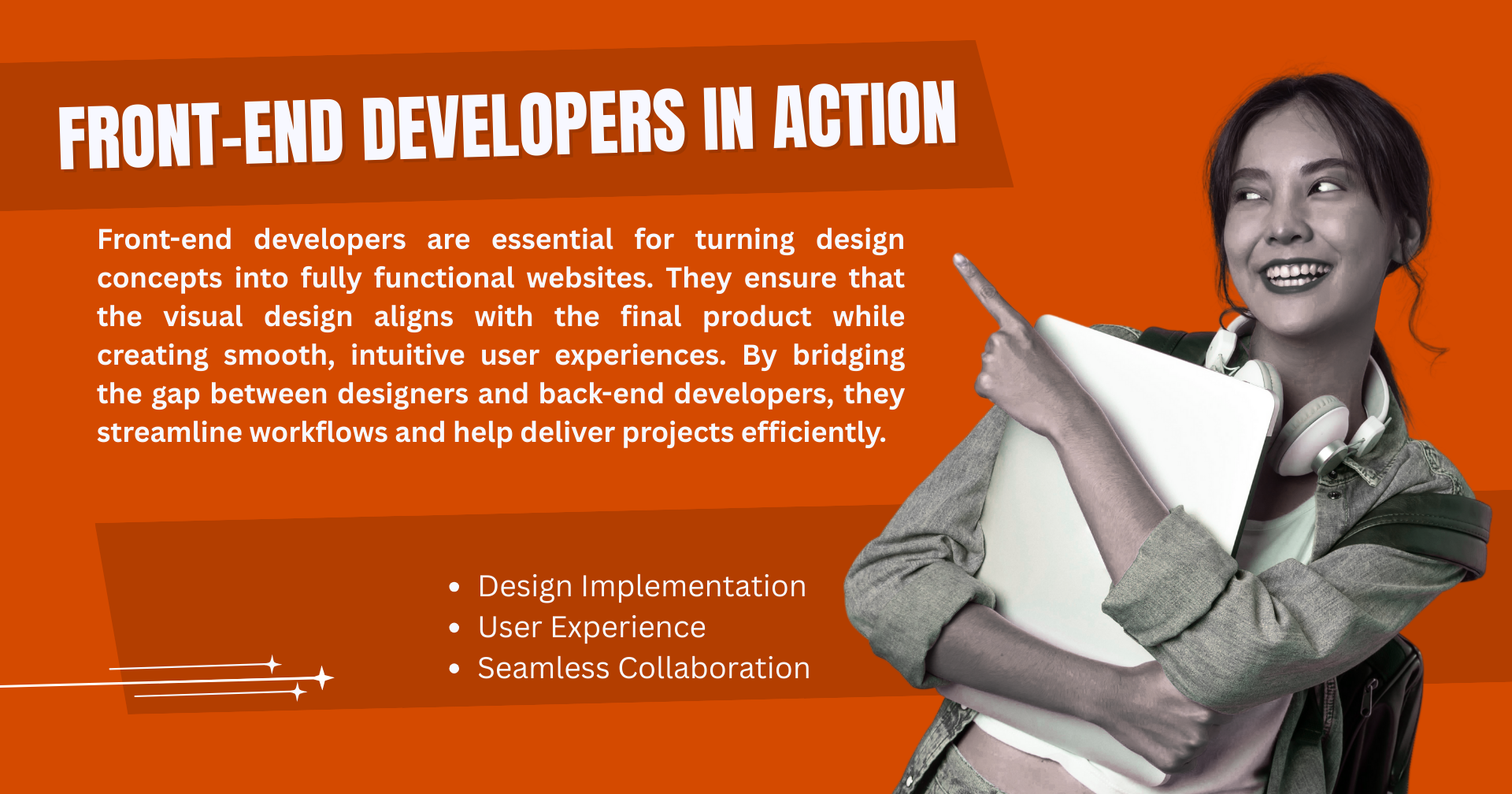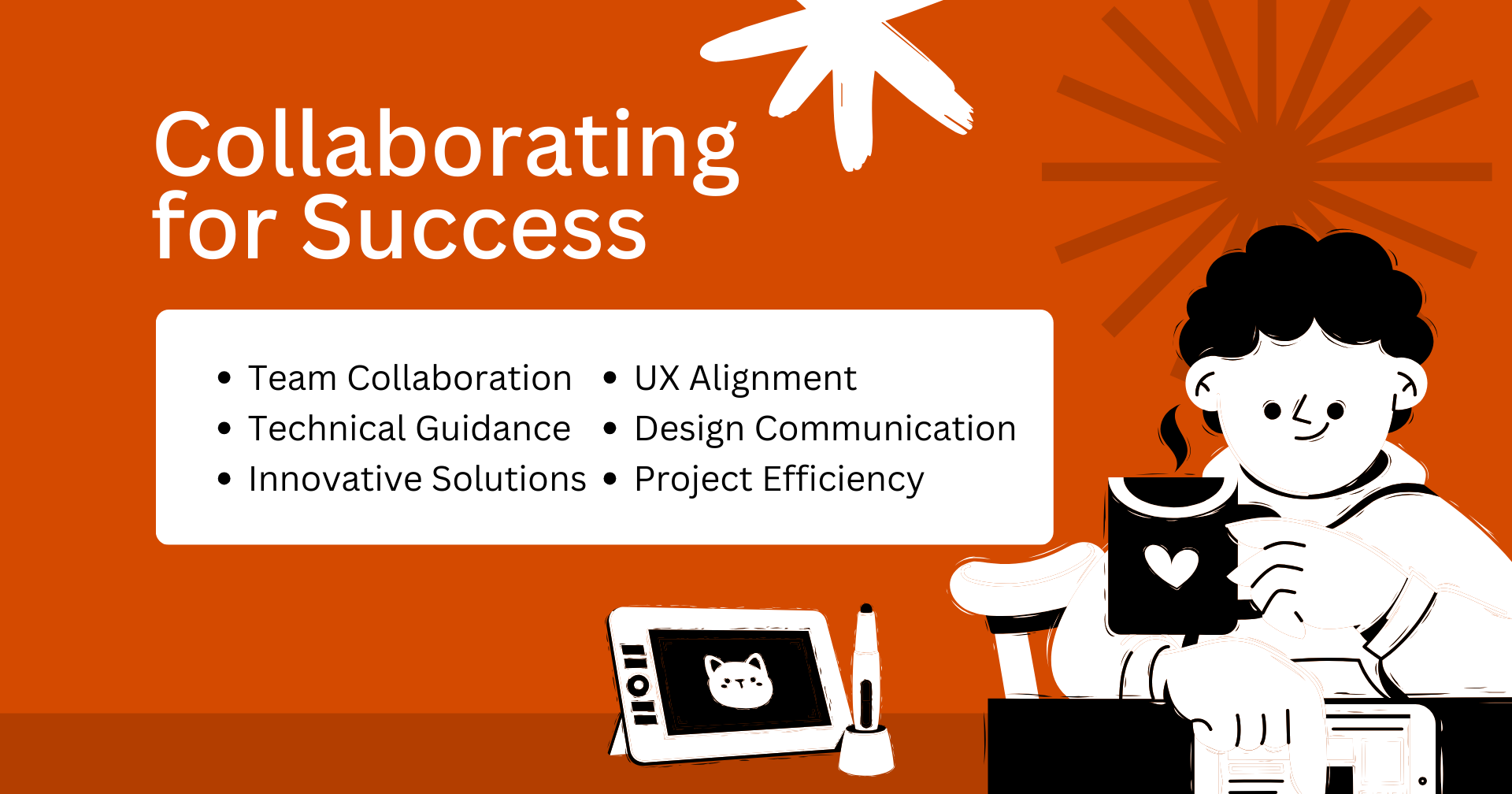Introduction
In the ever-evolving landscape of technology, the role of a front and end developer has become one of the most sought-after in the industry. With increasing demand for seamless digital experiences, businesses now prioritize professionals who can blend functionality with visual appeal. A front and end developer is the bridge between a concept and its execution, ensuring that the software not only looks great but performs optimally.
A skilled front and end developer does much more than write lines of code. They serve as the bridge between creative design and technical functionality, translating complex design visions into seamless, user-friendly interfaces. Their work ensures that a website or application not only works but also provides a smooth and engaging experience for users.
What sets front and end developers apart from specialists is their dual expertise. While front-end developers focus on the client-facing aspects and back-end developers handle server-side logic, a front and end developer manages both. This combination allows them to see the big picture, anticipate potential issues, and deliver solutions that are both technically sound and visually appealing.
In today’s fast-paced digital world, companies recognize the value of hiring professionals with this versatile skill set. A proficient front and end developer can reduce miscommunication between teams, streamline workflows, and ensure that projects stay on track and meet high-quality standards. This makes them a strategic asset for any organization looking to stay competitive.
Their responsibilities extend beyond coding. These developers must understand user behavior, accessibility, and responsive design principles. They are also often involved in testing, debugging, and performance optimization, making sure that the final product performs efficiently across devices and platforms.
Collaboration is another cornerstone of their role. Front and end developers work closely with designers, project managers, stakeholders, and sometimes marketers to align technical implementations with the overall vision of the product. Their ability to communicate technical concepts clearly helps keep everyone on the same page and ensures that design intentions are preserved.
Moreover, the rapid evolution of technology means that these developers must continuously learn new frameworks, languages, and tools. Staying updated with the latest trends in front-end and back-end technologies ensures that they can implement modern solutions, improve performance, and maintain security standards. This adaptability makes them indispensable in the constantly evolving tech landscape.
Ultimately, hiring a skilled front and end developer is about more than just technical proficiency. It’s about bringing together creativity, problem-solving, and technical expertise to deliver high-quality digital products. Companies that invest in such talent are better positioned to create applications and websites that are reliable, visually appealing, and optimized for user satisfaction in a digital-first world.
Understanding the Job of a Front and End Developer
A front and end developer wears multiple hats. On the front-end side, they handle how users interact with the application—creating layouts, buttons, navigation menus, and overall user experience. On the back-end side, they deal with server-side logic, databases, and the integration of APIs. This combined role allows for greater coherence in product development and fewer communication gaps between design and development teams.
While it’s tempting to compare them with a web developer, the key distinction lies in the scope.The role of a front and end developer brings together two critical areas of software creation: the client-facing side and the server-side backbone. Instead of focusing on just one, this position covers both, allowing the developer to manage the full spectrum of responsibilities required to bring an idea to life.
On the client side, the developer ensures that users experience a clean, engaging, and responsive interface. This involves working on design elements, navigation structures, and interactive features that make an application not only functional but also enjoyable to use. A smooth and intuitive front end can significantly improve user satisfaction.
On the server side, the developer handles the behind-the-scenes operations that keep applications running efficiently. This includes managing databases, building secure APIs, and ensuring that the system performs well under different loads. A strong back end ensures reliability, scalability, and data protection.
What sets this role apart is the ability to bridge the gap between design and functionality. By understanding both perspectives, a front and end developer can anticipate challenges early, reduce miscommunication between teams, and deliver a product that feels cohesive from start to finish. This holistic approach saves time and creates a better end result.
Ultimately, the job requires a balance of technical knowledge, creative problem-solving, and adaptability. Whether it’s improving user experience on the front or strengthening security on the back, these developers play a vital role in shaping digital products that are not only visually appealing but also robust, reliable, and ready for long-term growth
How They Fit Into Website Development?
The importance of website development in today’s economy cannot be overstated. A business without a strong online presence risks losing its audience to competitors. Website development encompasses everything from coding to design, and this is where the front and end developer becomes indispensable.
For instance, if you work with a website development company, you’ll likely find teams comprised of various specialists. However, incorporating a front and end developer into such teams streamlines communication and allows for quicker turnaround times. They ensure consistency between design mockups and the final deployed product, reducing friction in the development pipeline.
Even among website developers, the presence of a full-stack capability—often provided by a front and end developer—is considered a major asset. Not only can they collaborate effectively with other specialists, but they can also independently manage complete projects when required.

Web Development Services and User Experience
Web development services today demand more than just creating static pages. Businesses want responsive, interactive, and performance-optimized digital solutions. The front and end developer delivers this by understanding both client-side scripting and server-side processes.
User experience is a significant factor in any online platform’s success. This is where user interface design plays a vital role. A front and end developer with expertise in UI can ensure that websites and applications are not only functional but also user-friendly. They consider things like typography, spacing, color theory, and interaction feedback to create an engaging interface.
Many companies also hire specialists in uiux or ui and ux design, but having a front and end developer with a strong grasp of both can reduce the need for larger teams. They can implement UI recommendations directly, which leads to more cohesive and streamlined products.
Working with Designers and Stakeholders
A front and end developer often collaborates with stakeholders, project managers, and an interface designer to bring projects to life. Their ability to communicate technical limitations and opportunities makes them valuable in early planning stages.
With the growth of digital ecosystems, we’re seeing a blending of roles. Teams are moving toward a unified approach, where professionals understand both user interface and user experience design. This shift not only fosters innovation but also leads to products that are more aligned with user expectations.
Collaboration with designers and stakeholders is a critical part of a front and end developer’s role. Developers must understand the vision behind a project, translate design concepts into functional code, and ensure that the final product aligns with both user needs and business objectives. Effective communication between developers and designers is key to turning creative ideas into practical, interactive experiences.
In projects involving frameworks like Flutter and Angular, the input of a front and end developer becomes even more significant. These modern frameworks rely on reactive programming and component-based architecture, which require precise coordination between design and development teams. A clear understanding of these technical requirements ensures that developers can implement features efficiently while maintaining design integrity.
Mobile responsiveness is another area where collaboration matters. Designers often provide layouts and user interface mockups, but developers must adapt these designs to work seamlessly across different screen sizes and devices. This requires close communication to balance aesthetic goals with technical feasibility, ensuring that the final product is both visually appealing and highly functional.
Stakeholders also play a major role in shaping project requirements and priorities. Front and end developers must interpret business goals, gather feedback, and incorporate changes without compromising code quality. Regular updates and collaborative problem-solving help maintain alignment between technical possibilities and organizational objectives, ensuring smooth project progress.
Ultimately, working with designers and stakeholders demands both technical expertise and interpersonal skills. A successful front and end developer bridges the gap between creative vision and technical implementation, creating products that are innovative, reliable, and user-centric. By fostering strong collaboration, developers ensure that every project achieves its full potential, delivering high-quality experiences that satisfy both users and business needs.

Beyond the Browser: Mobile App Development
While front and end developers are known for their work on web platforms, many also contribute significantly to mobile apps. The rise in phone application usage means businesses are eager to have their apps mirror the functionality of their websites. This requires developers who can ensure consistency across devices. A competent front and end developer is familiar with mobile-first design principles and responsive frameworks.
This ensures that users have a seamless experience whether they’re accessing the platform via desktop, tablet, or smartphone. Collaborating with interface designers on mobile projects helps developers tailor designs to smaller screens. This involves making buttons tappable, layouts scrollable, and fonts legible across different devices—all of which fall under the job scope of a front and end developer.
Development Tools and Workflow Optimization
To meet tight deadlines and maintain quality, app dev teams rely on frameworks and tools that enhance efficiency. A front and end developer proficient in modern tools—such as Visual Studio Code, Git, Postman, and Docker—brings significant value to any team. Version control is essential for any development project. It helps teams track changes, collaborate effectively, and roll back errors without disrupting the entire codebase.
Development tools and workflow optimization play a vital role in ensuring efficiency and consistency in the work of front and end developers. By using the right set of tools, developers can streamline tasks, reduce errors, and maintain high-quality standards throughout a project. These tools also help teams collaborate better and keep complex projects organized.
Testing is another crucial part of the workflow. Whether it’s unit testing, integration testing, or end-to-end testing, each step ensures that the product performs as expected. Regular testing minimizes risks, identifies issues early, and provides confidence in the stability of the system before release.
Automation tools make this process even more effective. With the right developer software, repetitive tasks such as running test cases, checking code quality, or deploying updates can be handled automatically. This not only saves valuable time but also ensures fewer bugs make their way into production.
Together, these practices create a smoother workflow where developers can focus on solving real problems instead of being slowed down by inefficiencies. By combining smart tools with structured testing, projects achieve higher reliability and deliver stronger results.
The Future of Front and End Developers
The digital world is rapidly changing, and so is the role of the front and end developer. With the integration of AI tools, voice search, and IoT devices, developers must now think beyond traditional interfaces. They’re being challenged to build experiences for devices that don’t even have screens.
As technology continues to evolve, the role of the front and end developer is becoming increasingly vital. Modern digital experiences are no longer limited to websites or mobile apps. With the rise of wearables, VR, AR, and voice-activated platforms, developers must constantly expand their skill sets to meet diverse technological demands. Their adaptability ensures that they remain relevant in an ever-changing digital landscape.
Front and end developers are now expected to bridge the gap between emerging technologies and user expectations. They must understand the unique interaction patterns of each platform, whether it’s designing an intuitive interface for a smartwatch, creating immersive VR experiences, or developing responsive voice commands. This requires a combination of creativity, technical skill, and user-centric thinking.
Prototyping and wireframing have become essential early steps in digital product development. By collaborating with designers and stakeholders during these stages, front and end developers help ensure that technical feasibility aligns with the envisioned user experience. Early involvement allows for better decision-making and reduces costly changes during later stages of development.
Coding remains at the core of their responsibilities, but the emphasis is shifting towards writing modular, maintainable, and reusable code. Modern frameworks and tools empower developers to build complex applications efficiently, while also allowing them to respond quickly to changes in project requirements or technological advancements.
Testing and quality assurance are also critical components of the future-facing role. Developers now incorporate automated testing, continuous integration, and performance monitoring into their workflow. This ensures that digital products remain reliable, scalable, and secure across multiple devices and platforms.
The multidisciplinary nature of front and end developers positions them as key players in cross-functional teams. Their ability to understand both design and back-end architecture allows them to contribute meaningfully to project planning, problem-solving, and innovation. As industries continue to embrace digital transformation, developers will be instrumental in shaping the way people interact with technology.
Ultimately, the future of front and end development is one of constant learning and adaptation. Developers who embrace new tools, technologies, and methodologies will define the next generation of human-computer interaction. Their work will continue to influence how users experience digital products, making them indispensable contributors to the evolving digital world.

Conclusion
Being a front and end developer today is more than just writing code.It requires a deep understanding of how digital products are experienced by users and how they serve business objectives. This dual responsibility makes the role both challenging and incredibly rewarding. Developers in this space are no longer just problem-solvers; they are experience-builders who craft solutions that shape the digital world around us.
User experience lies at the heart of this role. A skilled front and end developer doesn’t just think about what works technically but also about how it feels for the end user. From smooth navigation to intuitive layouts and responsive performance, every detail contributes to whether a digital product succeeds or fails in the real world. Mastery here means developing a mindset that balances empathy with technical expertise.
Performance optimization is equally important. In a digital landscape where speed and reliability define user satisfaction, developers must constantly refine their work to ensure efficiency. Small improvements in loading times, responsiveness, and scalability can have a huge impact on retention and engagement. This attention to detail is one of the qualities that separates good developers from great ones.
Collaboration has also become an inseparable part of the profession. Front and end developers don’t work in isolation; they are part of a broader ecosystem that includes designers, project managers, marketers, and business leaders. Their ability to communicate, share ideas, and translate business goals into technical solutions is what allows projects to move forward with clarity and purpose.
The fast pace of technology introduces another layer of responsibility—continuous learning. New frameworks, tools, and methods are introduced every year. To remain relevant and effective, developers must stay curious and adaptive. This constant evolution means the job is never stagnant; instead, it offers continuous opportunities to grow and innovate.
What makes this role especially unique is its versatility. A front and end developer may act as a designer when focusing on user interfaces, a tester when ensuring quality, or even a strategist when aligning development with long-term business goals. This ability to wear multiple hats makes the role dynamic and vital in today’s competitive tech landscape.
For businesses, investing in skilled front and end developers is no longer optional—it’s a critical part of success. Companies that prioritize seamless, high-performing, and visually appealing digital products will always have an edge in the market. Having a developer who can bridge both the front and back aspects of development ensures that products are not only functional but also built with long-term growth in mind.
Ultimately, mastering the role of a front and end developer today requires creativity, adaptability, and vision. It is about building products that are reliable yet innovative, functional yet delightful to use. Those who rise to this challenge are not just coding; they are shaping the future of digital innovation, setting new standards for technology, and creating experiences that leave a lasting impact on users worldwide.


